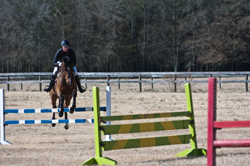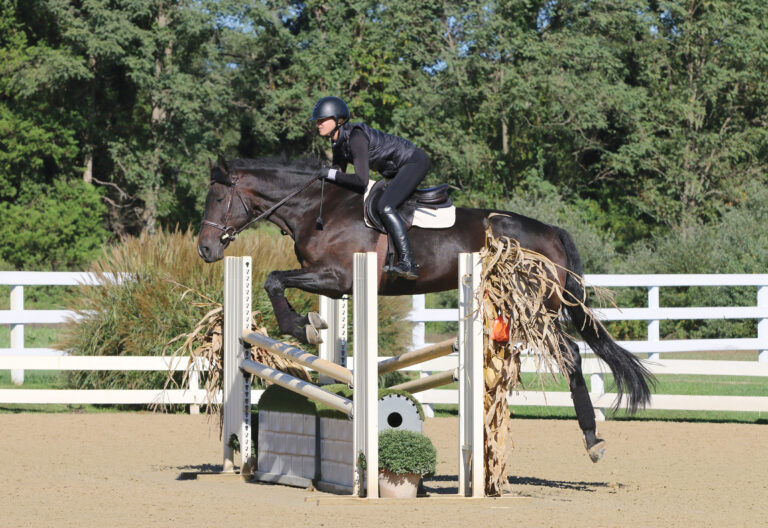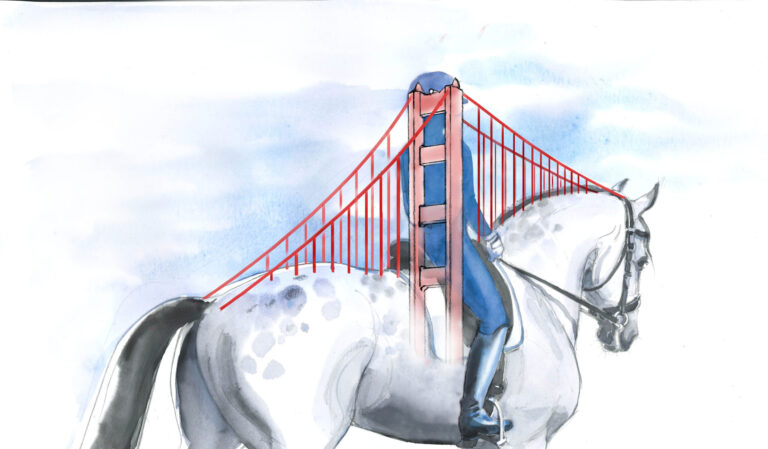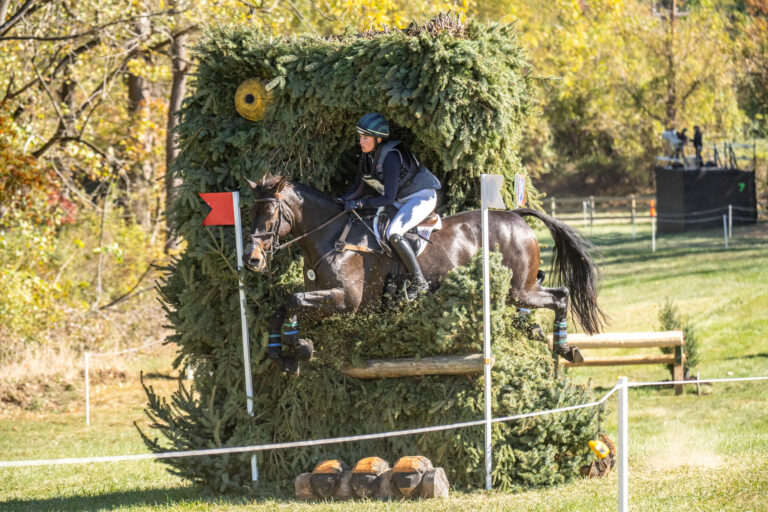A good start on your eventing cross-country course is the first step toward a successful finish. This sounds obvious, but you’ve seen eventers at every level getting a poor start by struggling with a horse that rears or spins at the start box, instead of focusing calmly on the trip ahead.

This kind of bumpy beginning has become even more of a drawback with the recent course-design trend of placing the first cross-country fence closer to the start box than in the past; at one three-star event recently, I paced off an eight-stride distance from the start to the first jump. That’s not a lot of room, or time, in which to rebalance your horse, get his attention and find a distance. It’s so much better to start out easy and build your pace to the jump.
In my experience, misbehavior at the start box often results when a horse associates the box with charging away at a flat-out gallop, a common mistake for professionals as well as amateurs. After a few such explosive starts, the horse begins anticipating and becomes a handful the minute he sees the box.
The easiest way to avoid this problem is to always start cross-country in a low-key way. Use the new start box design, which now has a back entrance so riders can walk in from behind instead of having to go to the front of the box, enter, and turn around. The rules allow you to walk your horse in the back, out the front, in the back again… as many times as you like, while waiting for your start time. This is a much more relaxing way to begin, especially if you remember to take a few deep breaths.
Suppose your horse has already learned to regard the start box as an exciting place. There are a couple of things that, if you do them consistently, can help him keep the lid on.
School the start box ahead of time. Well in advance of the cross-country phase–the day before if you’ve already arrived at the show grounds–tack up your horse, ride him to the start box, walk him quietly in and out of it several times, then take him back to the stabling and put him away. Your goal in this session is to remove as much tension as possible from the situation, so if your horse tends to get wound up at the very sight of the start box, ask a friend to come along and lead him into and out of the box the first few times. (As a courtesy, and to make clear that you’re not schooling the cross-country course, be sure to check with the event organizer beforehand and explain what you need to do.) Once again, be aware of your own breathing and make it deep and slow–your horse will notice. Some riders even recommend hand-grazing your horse in the start box; it’s worth a try, although I personally think horses are smart enough to know the difference between grazing in a halter and being tacked up and ready for work.
Plan on starting late. When the timer says “two minutes,” a lot of riders go trotting up to the box–but once you’re there, two minutes can seem like forever. Instead, when you’re at the two-minute mark, plan to trot a nice big 20- or 30-meter circle near the box and within earshot of the timer. (Avoid spinning your horse in a small circle; you’re trying to keep him relaxed.) When you hear “10 seconds,” come back to walk, start your stopwatch and walk into the box for your start. Ease him well clear of the box before telling him it’s time to get down to business: Trot out of the box, pick up your canter and go on to the first fence. That’s how I usually do it when I’m bringing young horses along, and as I check my watch during my ride I simply add 10 seconds to the time I have left (because I know I started the watch about ten seconds before I crossed the starting line). Even if you lose a few seconds by trotting out of the box, it pales in comparison to the time you lose when your horse is upset. And even if your horse tends to be a little sticky to the first fence, getting after him on his first stride out of the start box will only create an additional problem.
Set yourself up to stay relaxed. The person who goes to the start box with you can make a big difference; you need someone who will help you focus. For instance, if your instructor or a knowledgeable riding buddy walks you to the box while reviewing the course and making constructive suggestions (such as reminding you to breathe!), that can be soothing. The well-meaning but overprotective person who actually makes you more anxious with a string of reminders–“Are you thirsty? Do you need to go to the bathroom? Is your watch on? Did you tighten your girth? Where’s your whip?”–can add to your tension. Your ride will benefit if you find a tactful way to avoid having that person escort you to the start.
Darren Chiacchia, riding the Trakehner stallion Windfall II, was a member of the U.S. Equestrian Team’s bronze-medal-winning eventing squad at the 2004 Athens Olympics and individual gold medalist at the 2003 Pan American games. Based at Independence Farm in Springville, N.Y., and Ocala, Fla., Darren is active on the High Performance and Events committees of the U.S. Eventing Association and a faculty member and assessor for the USEA’s Instructor Certification Program.
Learn Darren’s system for teaching your horse to navigate a cross-country coffin jump in the November and December 2007 issues of Practical Horseman magazine.











